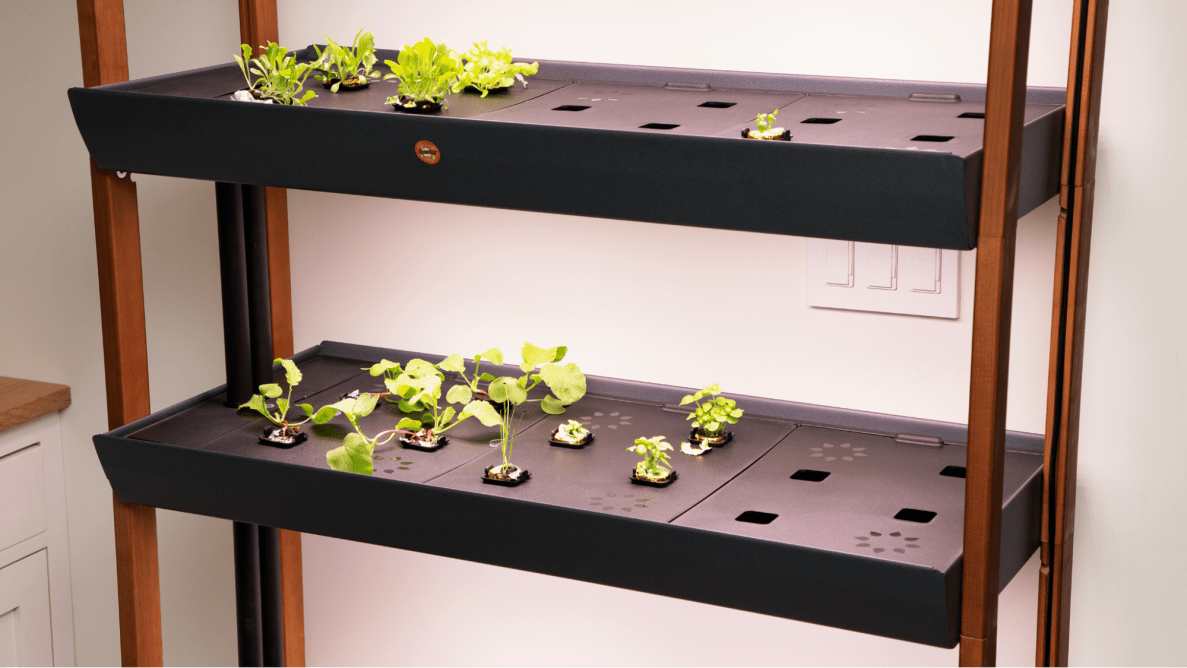About Rise Garden
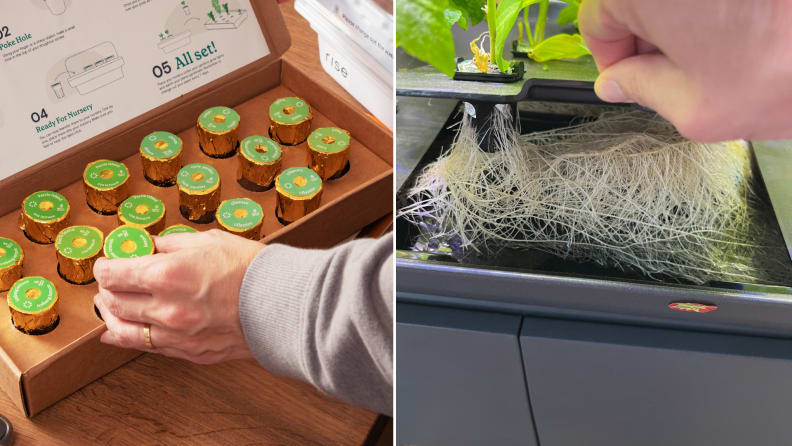
Proprietary seed pods make planting any Rise Garden quick and easy. The hydroponic root system makes for easy maintenance and strong plants.
Rise Garden was originally known for its Personal Garden—a countertop model that can grow 12 plants and only takes up 18 inches of counter space. We liked it so much we ranked it the best countertop hydroponic garden.
When Rise introduced the new, larger Rise Garden, we were immediately attracted to the beautiful furniture-like quality of the structure, and the flourishing plants in it. The modular, self-watering, LED-lit garden system comes in one-, two-, and three-tier options, plus two colors—Cloud or Charcoal. We tested the three-tier version in Charcoal.
The basic setup comes with 12 plant receptacles per tier but you can purchase interchangeable tray lids with spots for eight or 12 plants each, expanding the capacity of each level up to 36 plants.
The system works with proprietary seed pods that fit perfectly into the included cups. Each garden system comes with the 16 Starter Plant Variety Pack. You can also purchase a wide variety of vegetable, herb, and flower seed pods, or Seedless Pods, which are perfect for germinating your favorite seeds.
There’s a water tank hidden in the base of the unit and a pump that circulates water through the tiers. The full-spectrum LED lights mimic natural light to promote optimal growth, and Rise recommends they run for 16 hours per day.
Plus, the garden unit can be connected to the Rise Garden app. When you input all of the seedlings as you start to grow them, the app keeps track of their growth progress, gives you guidance on each growing phase, and alerts you to overall garden maintenance.
How we tested Rise Garden
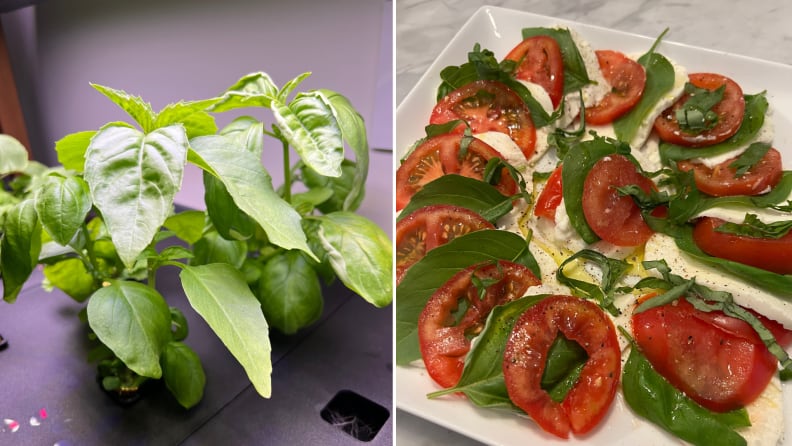
We grew a variety of produce and put it to good use over the course of several months.
We assembled a three-tier unit and initially sowed 25 seed pods. Twelve seed pods were sown in the three nursery trays provided. But since we wanted to start more seed pods at the same time, we grabbed some clear plastic tray covers from seed-starting trays we had on hand and placed them over the seed pods in the Rise Garden trays.
Here’s what we planted:
- Butter crunch lettuce (x2)
- Paris Island Cos lettuce (x4)
- Iceberg lettuce (x2)
- Italian parsley (curley)
- Flat Italian parsley
- Sora Radishes (x4)
- Chives
- Basil (x2)
- Mini Siam tomatoes (x4)
- Patio baby eggplant (x4)
- Gochujang peppers (x3)
- Celery
We then set up all the pods in the Rise Garden app so we could track their growth and see how to care for them.
After one week, we moved the pods that were started in the nurseries to the garden itself and updated their positions in the app. We tracked growth and harvested items as they were ready.
What we like
It’s easy to set up and maintain
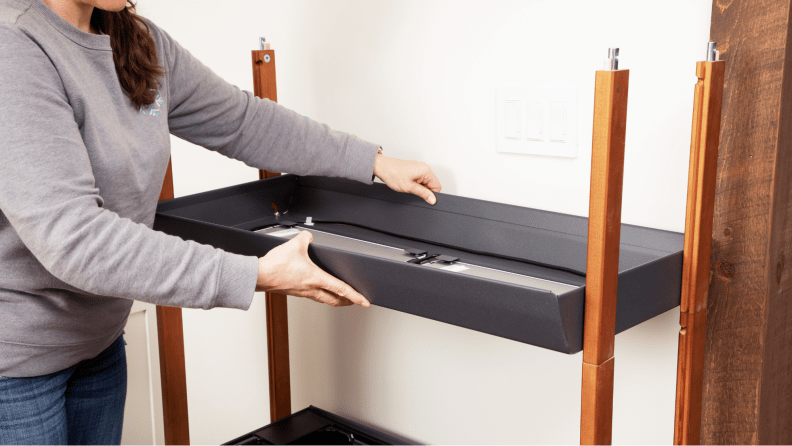
Even the tree-tier garden is easy to assemble solo.
We were able to set up the three-tier system in about an hour, and it really only requires one person. Two people may make it go even faster, but it’s not necessary.
The app tracks all the maintenance necessary to optimize growing. While it didn’t send as many push notifications as we expected (more on that later) it gives detailed information about adding supplements to the water, pruning plants, and harvesting.
You can grow a variety of plants year-round
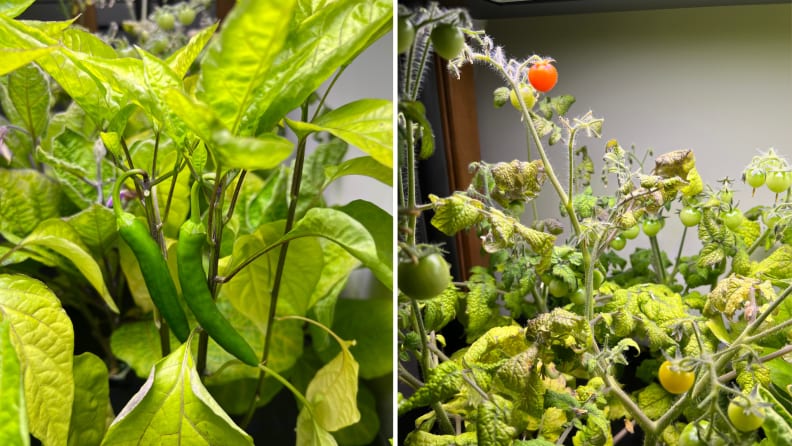
Gochujang peppers and baby Siam tomatoes grow beautifully in the Rise Garden.
In a space no larger than a bookshelf, it’s possible to grow everything from lettuce and herbs to radishes and beets. Rise Garden gives you the ability to grow year-round, which means there are no timing or weather constraints on when you can plant new plants.
Want to start growing tomatoes in November? You can. Want fresh-grown strawberries in March? Just start the pods in December and watch them grow.
Fresh lettuce can be a staple year-round. The plants yield new leaves for months as long as you continue pruning them. We made salads for weeks with four different varieties of lettuces.
Herbs also continually yielded amazing quantities over the course of several months. We added basil, parsley, chives, and cilantro to countless dishes. The herbs, along with all the produce we grew, always tasted fresh and delicious.
It’s dirt-free and virtually pest-free
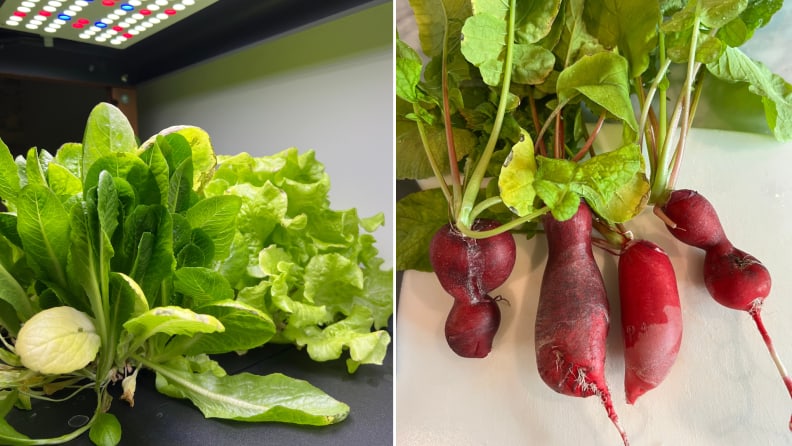
Crops can grow undisturbed by pests in this indoor garden system.
You can’t always avoid the occasional fruit fly, but the indoor, hydroponic nature of the garden means you won’t have to struggle with pest control or lose crops to insects.
I’ve lost entire outdoor crops of lettuce to rabbits and eggplant to aphids. It takes constant maintenance to keep outdoor crops safe from pests. With an indoor garden system, the bugs just aren’t there.
Part of the reason for a bug-free environment is that you’re not working with any soil. Since the hydroponic system grows in water rather than soil, you never have messy dirt to worry about in your house.
We were pleasantly surprised by how well the plants grew in the hydroponic system, including some that typically grow below ground, like radishes. The sorrel radishes grew above the seed pods, and they got just as large as we would have expected from in-ground radishes—minus any messy dirt or bugs.
What we don’t like
Bright lights and constant running water can take getting used to
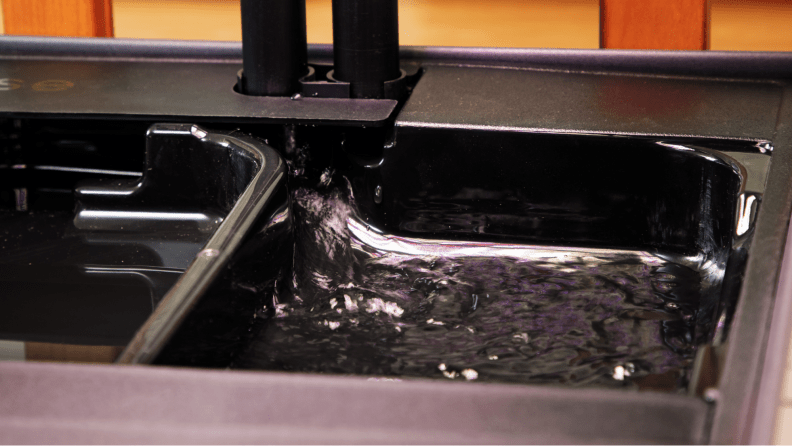
The sound of running water is something people either tend to love or hate.
Obviously, hydroponic growing requires water. It’s a whole lot easier and less messy than growing in dirt, especially indoors, but the sound of constant running water does take some getting used to. During testing, some people in the house found it soothing while others found it annoying.
The LED grow lights are quite bright—which approximates sunlight and makes for wonderful growing conditions—but they can be tough to get used to indoors. It’s recommended that the lights be on for 16 hours per day for optimal growth, but if the lights bother you they can be scheduled to run overnight (or at times when you’re out of the house).
You can also turn off the lights and water pump remotely from the app, but that only lasts for a short time before they turn back on. We did find that eventually most people got used to it, but it’s something to consider if you don’t like bright lights or the sound of running water.
Some plants don’t grow as expected
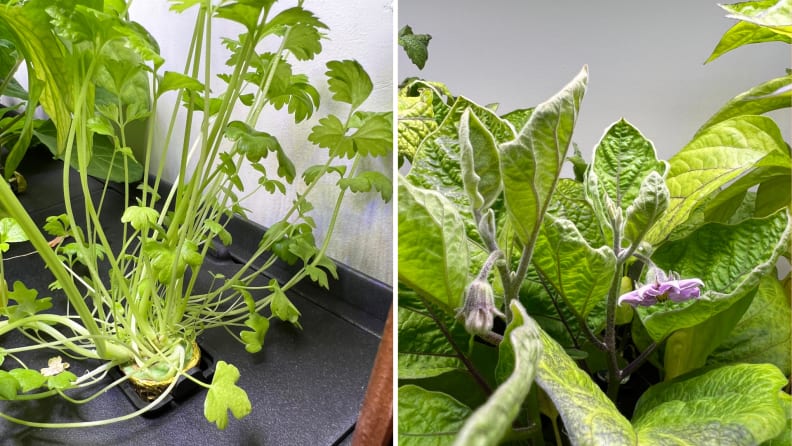
Celery didn’t amount to anything more than skinny stems, and we couldn’t pollinate the baby eggplant in time to make it grow beyond the flower stage.
Unlike the radishes, which were a pleasant surprise, some plants didn’t grow as expected. We don’t have an extensive sample size to evaluate, but some plants just didn't reach our expectations. Celery never amounted to more than a parsley-like bundle of stems and leaves, and patio baby eggplant took exponentially longer than expected to flower. (We were still waiting on produce from pods planted over 90 days prior.)
Once the flowers did appear, they didn’t open at the same time and we missed our window to cross-pollinate them. The flowers shriveled and fell off, and no eggplant followed.
Every plant is unique, and out of more than 30 plants only a few didn’t produce as expected. But if you’re not willing to play the odds, we recommend sticking to varieties that don’t require any pollination.
App notifications are spotty
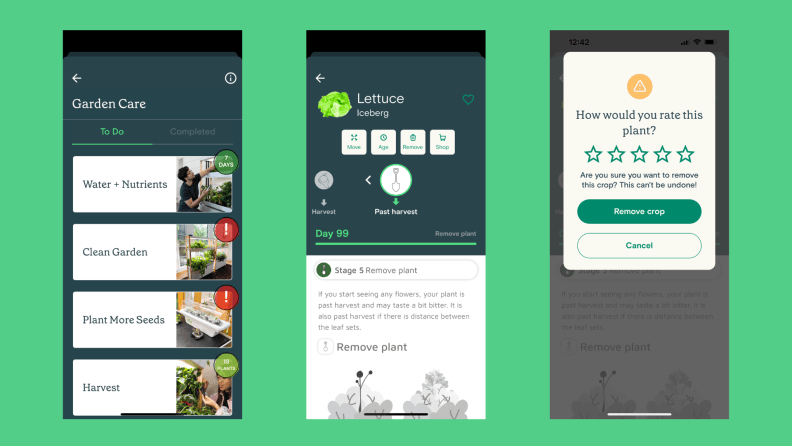
There’s lots of helpful info in the app, but push notifications could be more consistent.
Maintenance for the Rise Garden is easy, but it can also be time-sensitive. Nutrients need to be added at certain times, and some plants need regular pruning. Some of these require maintenance at specific times in order to produce, like for pollination phases mentioned above.
The app promises to keep track of all the details and alert you when it’s time to take action. But unfortunately, we found that the app didn’t proactively notify us when it was time to prune some plants or manually pollinate the flowers.
Some plants still produced fruit despite the miss, such as the mini Siam tomatoes and gochujang peppers, but the patio baby eggplants struggled. Flowers bloomed at different times, making it tough to match up the pollination needs without a regular reminder.
Should you buy a Rise Garden?
Yes, if you’re interested in easy indoor, year-round gardening
Whether you go for a countertop unit, the full three-tier setup, or something in between, Rise Garden can make indoor gardening fun and productive. If you’re an outdoor gardener who’s sad to close up your garden at the end of summer, Rise Garden lets you keep your green thumb going year-round.
It’s easy to maintain, especially with a little proactive effort. You may need to set some of your own reminders or check in with the app frequently, but you can easily have lettuce, herbs, and lots of other types of produce on consistent rotation year round.
We love the furniture-like look of the new Rise Garden system, and enjoy the ability to consistently supplement our meals with fresh, homegrown produce. If you're not ready to invest a large sum of money, or don't have the space for a floor-based unit, the countertop Personal Rise Garden is a great starting option.
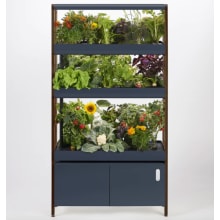
The three-tier setup is a beautiful furniture-like, hydroponic garden that can grow up to 108 plants indoors.
Meet the tester
Freelance Editor, Kitchen & Appliances. Danielle has a B.S. from Syracuse University and a AAS in Culinary Arts from Newbury College. Previously, Danielle was a Test Cook and Associate Editor at America's Test Kitchen, as well as a freelance recipe developer and food writer. She’s the mom of two boys and loves making pizza on Friday nights.
Checking our work.
Our team is here to help you buy the best stuff and love what you own. Our writers, editors, and experts obsess over the products we cover to make sure you're confident and satisfied. Have a different opinion about something we recommend? Email us and we'll compare notes.
Shoot us an email